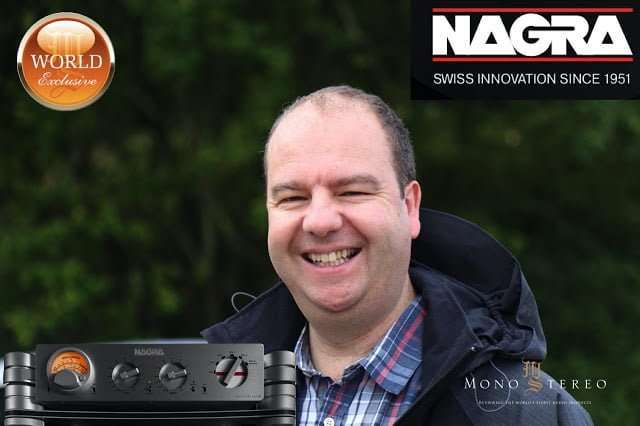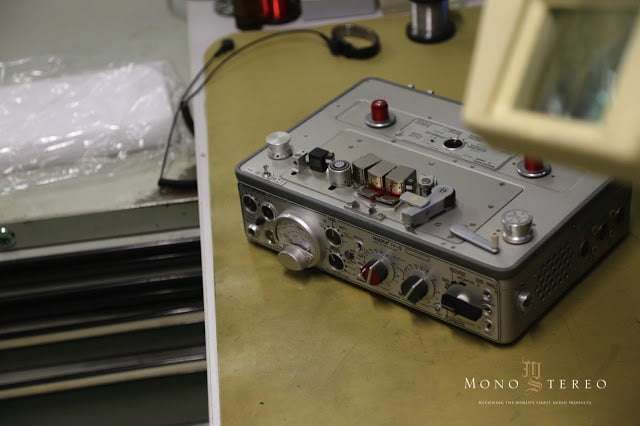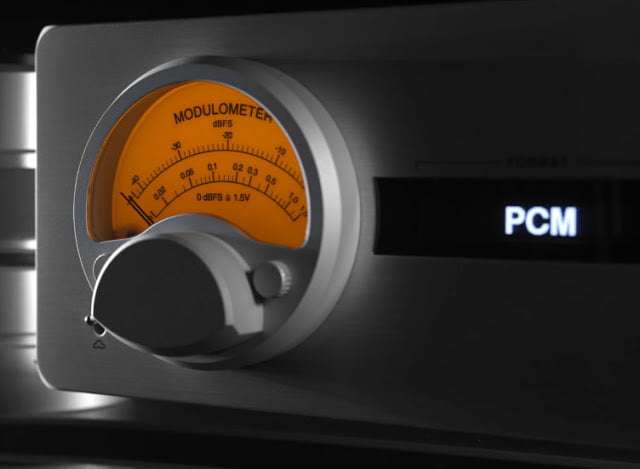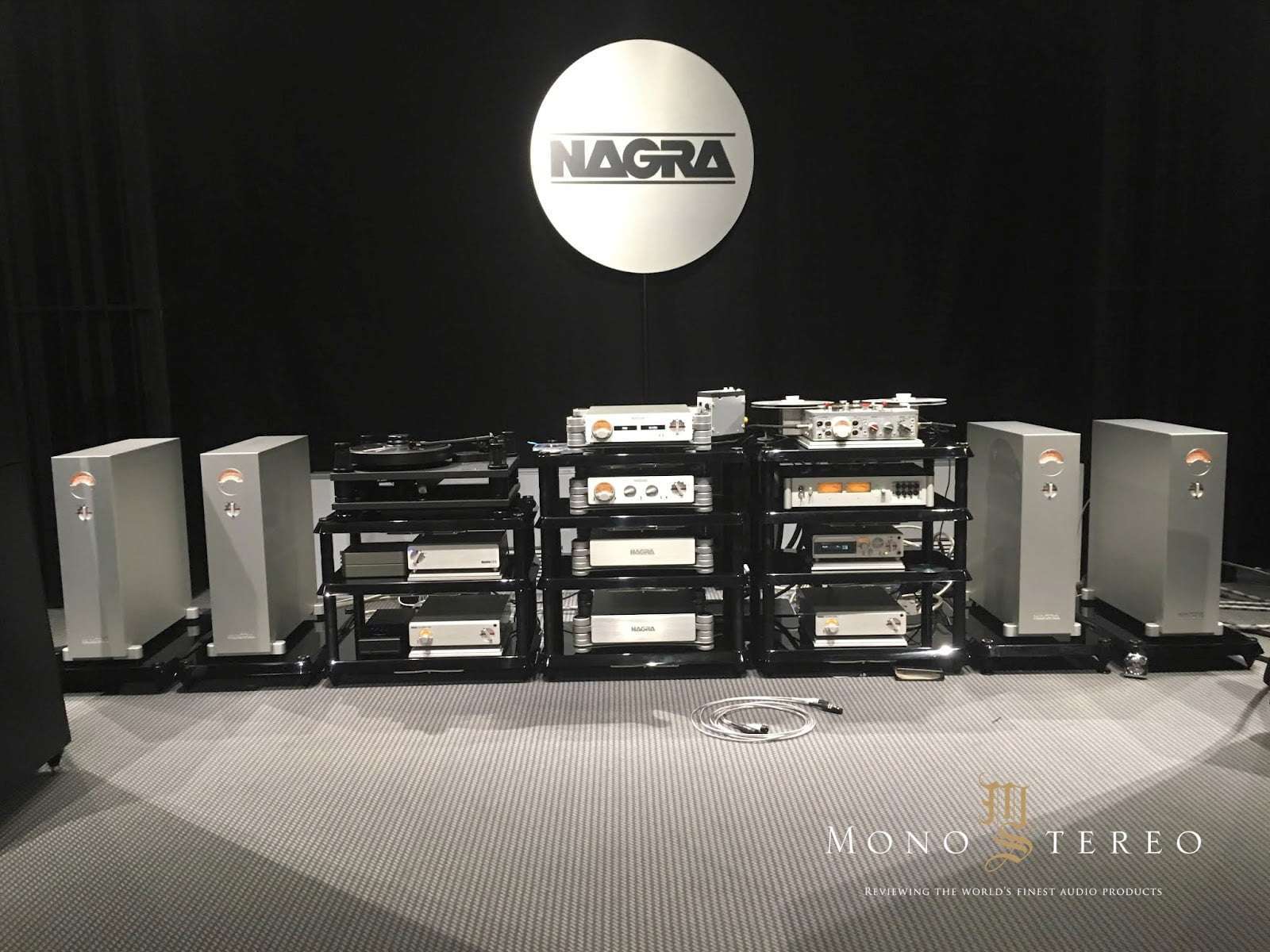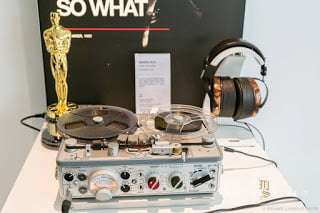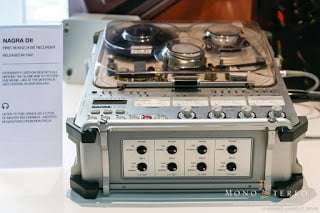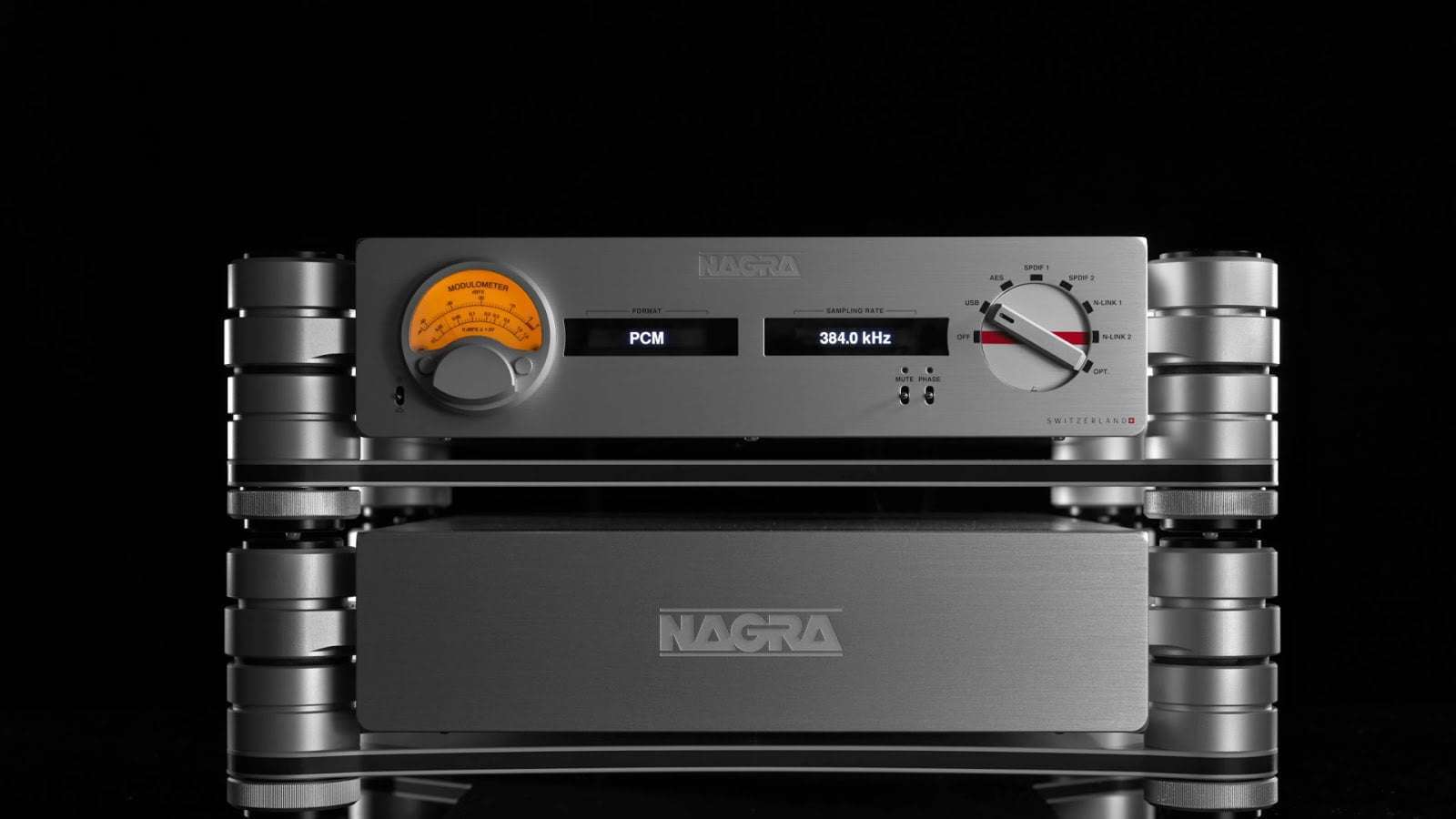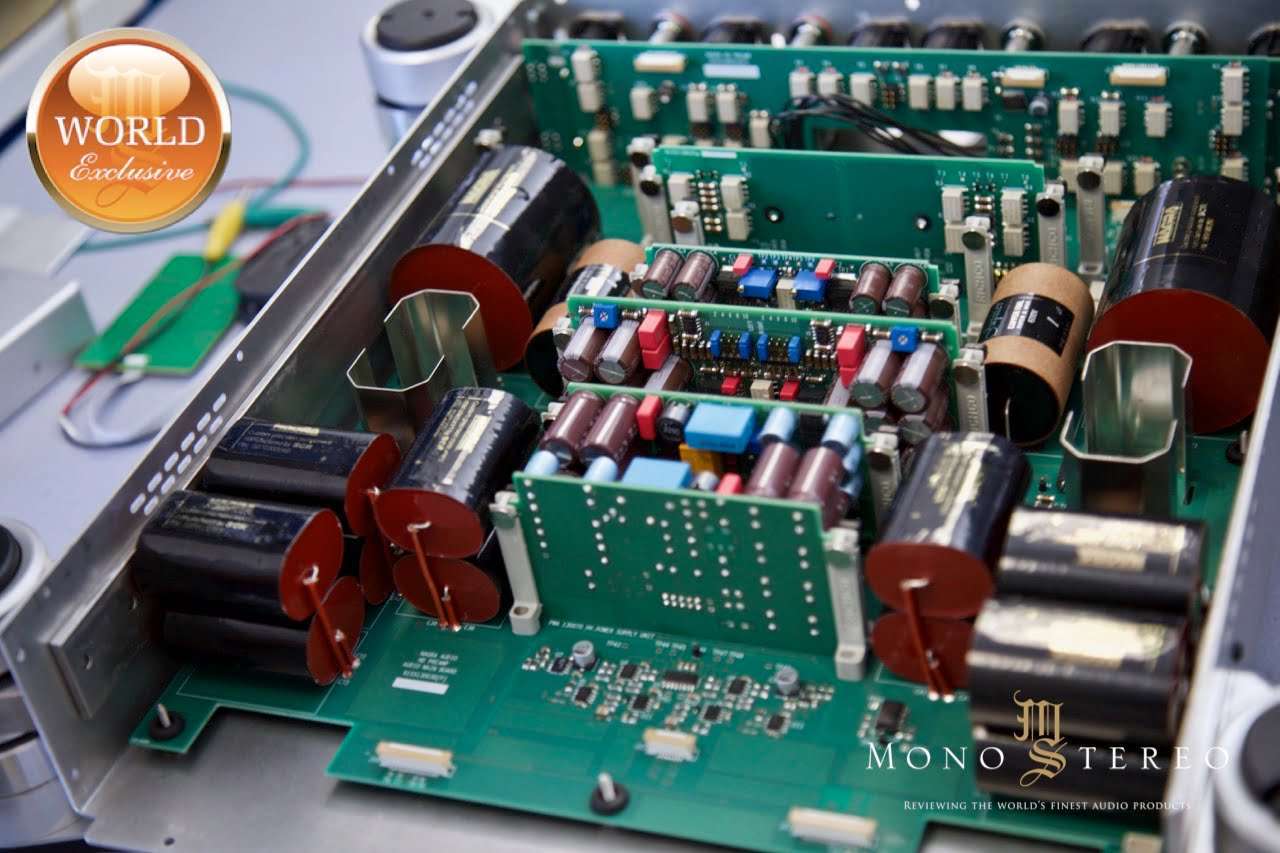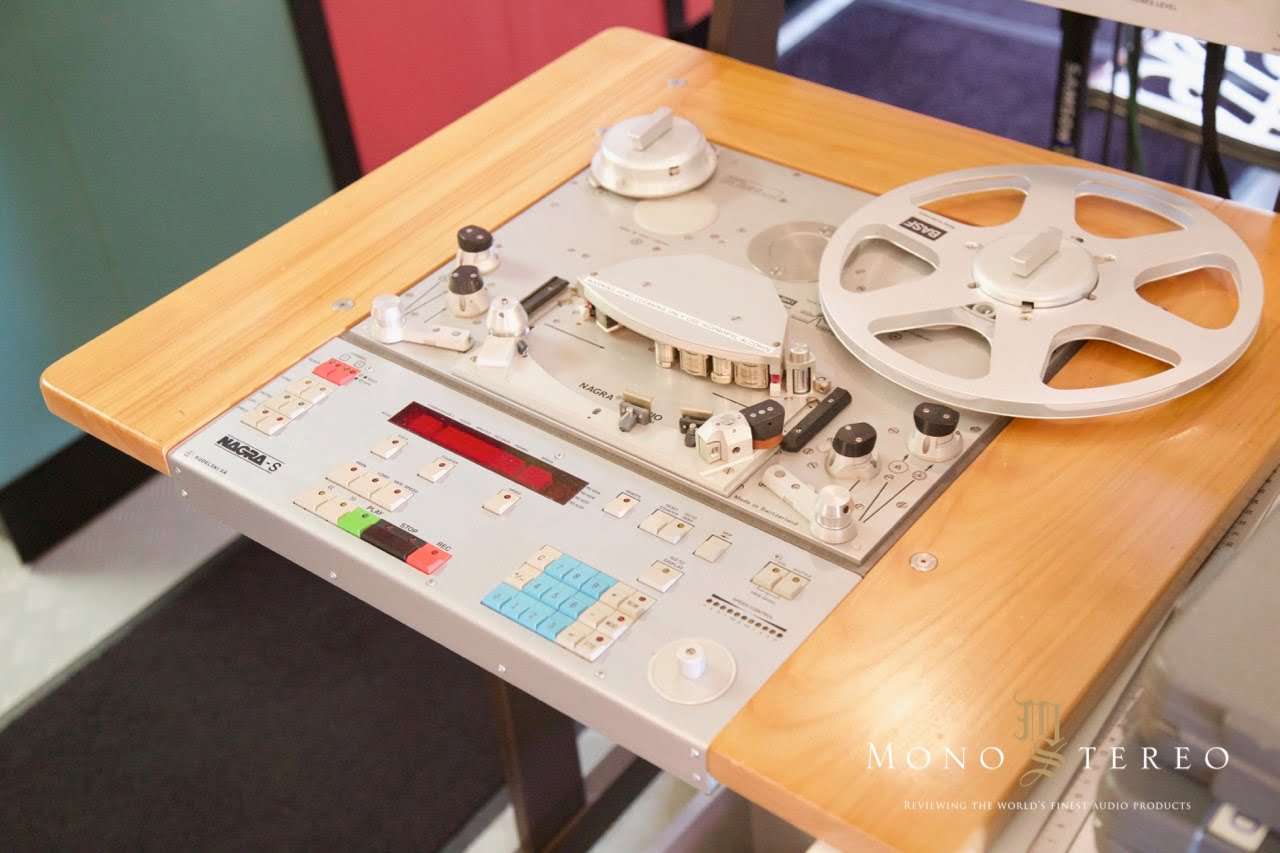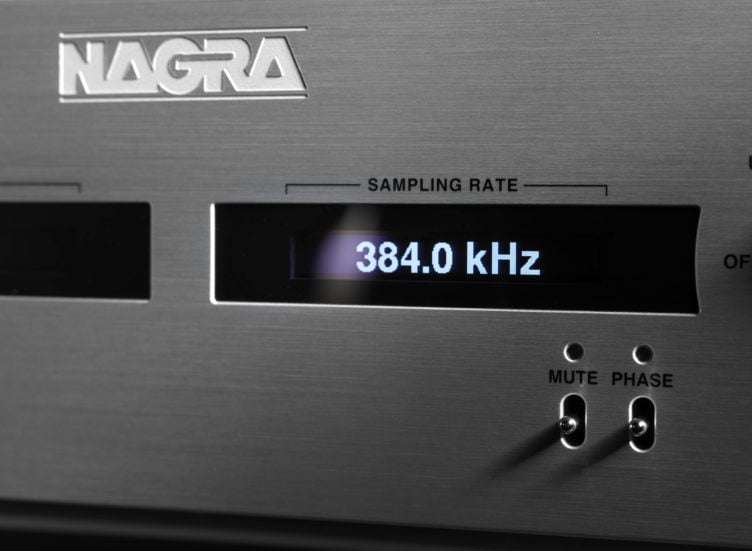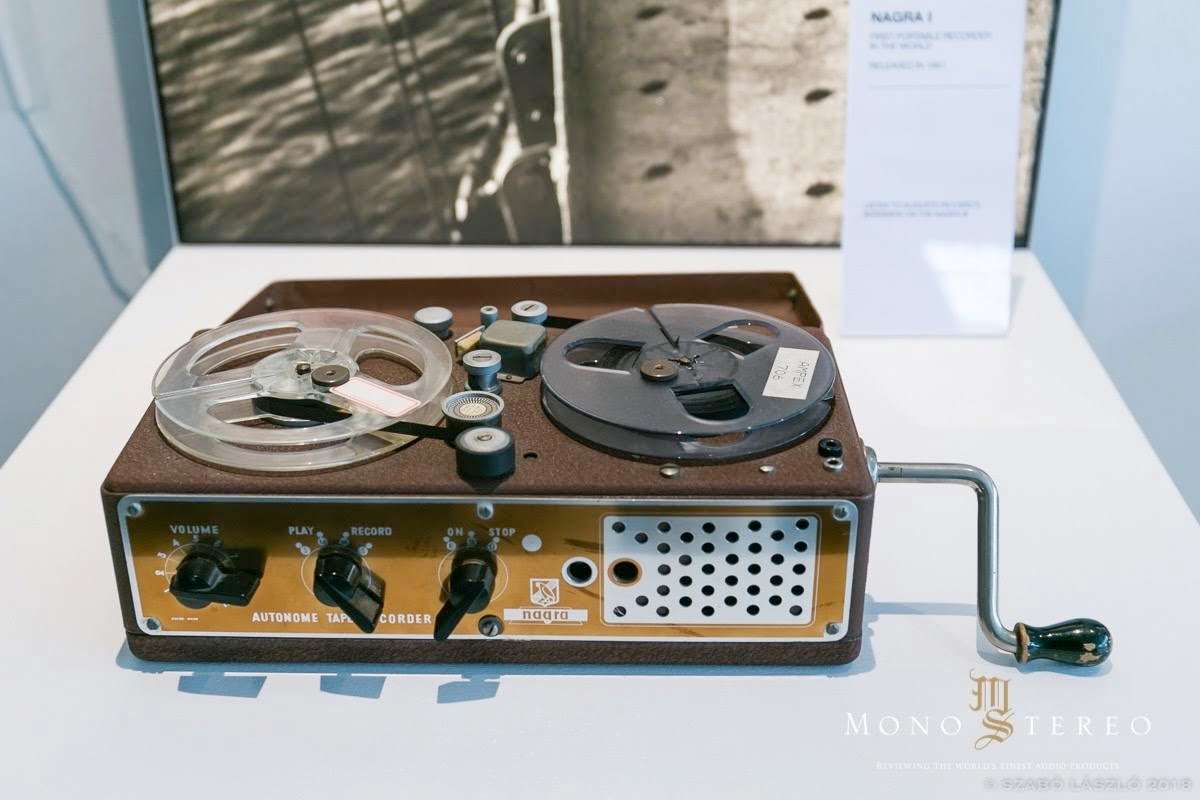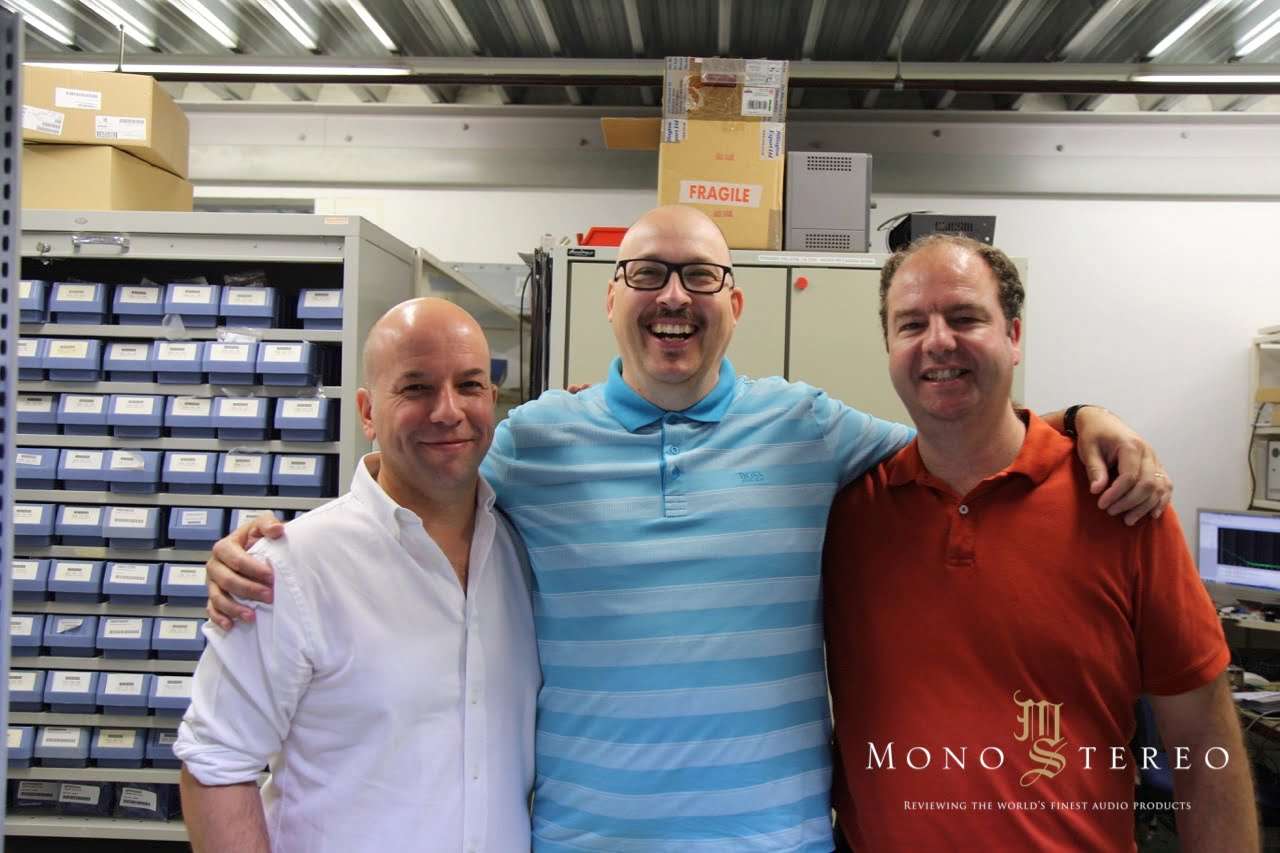An Exclusive Mono and Stereo interview with Nagra – Matthieu Latour (Audio Division Director). I would say this is essential reading for any high-end audio aficionado, connoisseur and enthusiast. You’re invited to learn more about the past, present, and future of one of the most if not the most iconic high-end audio manufacturer. Take a glass of your favorite wine, a cup of most cherish coffee, that good old single malt whiskey you’ve been reserving for a special occasion or whatever it fits the occasion, as this lengthy, but a most pleasant interview will take some time to fully enjoy…
Nagra holds one of the most impressive stories in audio. When did exactly Nagra enter the high-end branch of the audio industry and why?
As often with legends, there are different accounts of this story. Around 1997 a customer asked Nagra to make a special Nagra IV-S, our reference reel to reel tape recorder, with tubes and a phono stage instead of a microphone preamplifier. The sound was, as one can imagine, outstanding and that initiated the idea of doing the PL-P, a phono / line tube preamplifier running on batteries. The shape and style of the PL-P comes from the Nagra IV-S tape recorders.
This is also the reason for integrating a level meter, called Modulometer, and typical Nagra selectors and switches.
The PL-P was then an inspiration to move into the High-End world and was followed by a long line of successful products.
Who were, and perhaps still are, your inspirations?
When you look at the legendary Nagra IV-S the inspiration is really obvious. Nagra units follow a design philosophy of “form follows function”. Very often one function is handled by one command, to have fast control over important parameters. Some toggle switches or displays are inspired from the sailing or aircraft worlds, two passions of Stefan Kudelski our founder.
Do you consider yourselves an audiophile?
Most of Nagra employees and designers are musicians or music lovers. Many of them are audiophiles and were involved in high-end or recording before joining the company. We do many listening sessions and we encourage non-audiophiles to experience high-end audio, so the interest is growing and many employees are developing an interest in high-end and have started to build set-ups at home!
Personally, I am obsessed by sound recording and reproduction since a very early age. And I have always dedicated a lot of energy and resources to have a super hi-fi set-up. Of course, they were far away compared to what Nagra products are today, but for a student it was pretty good. In fact, early on I loved inviting people and playing them music like they never heard before! But I am also a music lover and musician which gives me a slightly different approach than a purely technical one. My goal is to use technics to bring music in the room, not just to play with technology.
How much does traditional Swiss quality still matter in the market?
Swiss legendary build-quality is essential as Swiss made products are usually expensive and should offer a quality and a long-lasting value to customers. Some Nagra recorders are still working flawlessly after 50 years and this is why our customers are ready to pay the extra money to get a long-lasting product, that in the long run will actually appear to be a good deal. We often say that a Nagra is for life! And really you can maintain a Nagra literally for decades.
Kindly list all of the current product line.
Our Classic Line includes all of the historical products such as:
- Nagra CD player range
- Nagra VPS tube phono stage, soon a new one will come, simply called Classic Phono
- Nagra PREAMP line tube preamplifier
- Nagra DAC class A discrete transistor topology
- Nagra AMP a single pair of transistors per channel
- Nagra INT integrated version of the Classic AMP
- Nagra TUBE DAC new DSD 256 HD DAC
- Nagra PSU super-cap power supply derived from the HD PSU
In our flagship range, called HD for High Definition:
- HD DAC X – DSD 256 dual-mono tube D/A converter
- HD PREAMP – flagship dual-mono line tube preamplifier
- HD AMP – monobloc massive power amplifiers
Is Nagra a technologically or emotionally (music) driven company?
We are driven by both, technology must prevail at some stages and emotion at others.
Technology is what will lead the work during the first development stage. A massive theoretical work is undergone before going through computer simulation. Once we are happy with the design, the prototype will go through extensive measuring. Once this is cleared, we will run numerous listening sessions and let emotion speak. We will then go back and forth with measuring / improving /listening… it is not always easy to switch from engineering to emotion awareness, but with time and training it becomes quite natural. It is also important to have a common lexicon to describe and translate emotions, then you can focus the effort on the right part of the product to keep improving the sound.
In fact, I think the balance in this combination is what makes Nagra products stand apart in this market.
Nagra HD line created quite a stir in the market. Please explain what makes it so special?
Nagra electronics were often well received and acclaimed around the world for their quality and unique style. What changed with the HD is that we wanted to free ourselves from the limitation of size that came with our portable recorder legacy. In addition, we did not have any concern over pricing, the design was entirely subservient to sound. The results are unique products with a very distinctive style that surpass what Nagra Classic can do and what our competitors do as well.
The HD preamplifier represents the state of the art in the 21st century. Please elaborate about this impressive project and product?
The HD PREAMP project spans more than three years of R&D. The topology is quite unique and many of the solutions that we have selected were chosen after extended research and exploration.
Since the launch of the VFS (vibration free support) some 10 years ago, we are quite aware of the impact of vibration and resonances. Of course, electronics are probably less sensitive than speakers, but they are actually quite sensitive to mechanical issues. The HD PREAMP project included a lot of mechanical work on computers and on prototypes. These included numerous listening tests with a wide choice of materials. As a result, the HD PREAMP has this unique mechanical construction that allows it to express the electronics’ full potential.
In terms of electronics the HD Line is superlative with generous powering and includes many technical advances like:
- Silicon carbide diodes (much faster than traditional diodes, so very similar to vacuum tube solutions without their disadvantages)
- Super-capacitor power supplies, chosen instead of batteries as they offer better results in terms of sound
- Separate power supply to isolate the mains (and transformers) from the audio unit
- Dual-mono
- No negative-feedback
- No active gain
- Unique patented volume control through commutated windings on Nagra transformers
The result is a very solid sound stage, a wide bandwidth and total respect of the phase. Even at low volume there is a sensation of fullness that is immediately perceived. Listening to the HD PREAMP for the first time is often a special experience. Another important point is that the unique volume control offers identical left and right volume levels and phase response.
What about the recently introduced HD DAC X?
The HD DAC X is the result of blending what we have learned from the HD PREAMP and from the HD DAC.
First, we have designed a whole new digital input board with a new proprietary USB solution.
This new digital engine can do DSD 256 and overall works at a higher internal resolution than its predecessor. As a result, we have a new generation of D/A with superior specifications and sound performance.
The power supply is derived from the HD PREAMP and actually has triple the super-capacitor volume. We always think of digital as “clean” though actually a digital signal is very sensitive to noise and often needs a superior power supply quality than analog.
The HD DAC X is dual mono with a new generation of fast drivers, new inter-stage transformers and uses one double triode per channel instead of one on the HD DAC.
The project listening sessions spanned over six months to select the best components (often custom-made for Nagra) and reach the sonic performance we wanted.
What sets Nagra apart from the competition?
I think what differentiates our company from the competition is the unique blend of past and present. Nagra has deep roots in audio and sound recording and reproduction that makes for a strong legacy. On the other hand, we are very much in the present with a large research and development capacity that allows us to gather talented people with a similar ambition for sound quality.
Then of course, being in Switzerland, we benefit from very high execution standards typical of high-end watch makers.
What are you doing differently with your approach to digital to analog conversion?
Regarding digital to analog conversion we did not want to use an “off-the-shelf” electronic chip like almost every audio company does. Today chips have reached a high performance level but they are designed with the mass-market in mind and often compact size. So Nagra wanted to explore other options to go further. This is why we use a custom-made conversion stage based on an FPGA. An FPGA is a combination of logic components inside a very compact integrated circuit that you can change by software. So, you can tailor the tracks inside this circuit by software and change what it does. This solution is very flexible and offers much better performance than commercial chips and can be easily upgraded just by software changes. If you open an HD DAC X, what will strike you is that the digital part is maybe 5% of the complete unit. The power supply and the analog stages are actually larger than the digital part! And this is essential to the overall result and sound quality.
How do you know when to stop with the R & D and move the product into production?
This is always a very tricky area. I guess this is true to most creative processes. As we know projects will evolve during development, we make sure there is space and time to include new ideas or directions and make a better product. Around the time when we feel the project is ready, we do critical listening sessions and compare the prototype against our other products or previous prototypes, sometimes with our competition. Then in a very typically Swiss approach we gather the project’s team and the management and see if there is a consensus or not. Some projects span several years, so we allow ourselves the luxury of time. This is always better to be 100% sure of the product before going into production, because making changes afterward is a tedious and expensive process. Though we would do it if this is in the interest of our customers.
Does form follow function with Nagra products?
Absolutely. We want first and foremost to think about the technicalities, then the ergonomics. Not to say we do not want the products to look nice but this comes second. This philosophy is really strong inside our company since it is our legacy from our early years.
How important is the quality of build in parts?
When you imagine that some people still use a Nagra recorder built in the 50s on a daily basis, you can speak about quality. In fact, quality almost killed the company in the 70s since no one needed to replace their recorder!
Quality is very much a Swiss value too, that you can experience in watches for instance.
We are quite demanding to our suppliers and we always work hand in hand with them to find new approaches to improve quality.
We also build some critical parts like audio transformers.
When there is no supplier for custom components, we buy a large quantity and extensively select them, for instance phono tubes used are only around 5% of the tubes we test!
We do all the assembling and testing of the products in-house. Each and every one of our products is extensively measured. After 48 – 72 hours of burn-in, it will be installed in a set-up and listen to individually as well.
Exotic materials?
We always seek out the best possible parts or material to do the job, so as a result we use many custom-made or exotic things. Aluminum is not exotic today but it has been used at Nagra for decades since it is easy to machine, light and quite rigid. One material that always triggers our customers’ curiosity is the condensers that use bees wax as a dielectric!
We do select materials based on their quality and not for being fancy or fashionable of course. You can state again “form follows function”!
On the other hand, we do not want to use fancy materials as a marketing gizmo. We can explain the choice behind every component and we owe it to our customers to make good decisions in their names since in the end they will not only purchase a product but also each and every one of its parts.
Solid-state vs tubes?
To us this is not really a question. The real question we always raise is, what will best serve the sound? We do not have a religious approach to this subject.
The feeling that most people have from tube or solid-state often comes from bad examples of questionable designs. What is important, in my view, is to know how to design proper schematics and exploit the strengths of both types. This is actually true of all components. So, we will use tubes where they are the best option, solid-state where it will be a better one.
In fact, there is also a better way to handle sound amplification and that is transformers.
Transformers are actually a better way to provide gain than tubes or transistors. We rely heavily on them and this is why we have our own workshop and skilled people to design and built them. This allows us a lot of flexibility to design outstanding products.
Analog vs digital?
In all fairness, what we call analog is basically an electrical representation of what was originally an acoustic wave. It can get very close to it, but it does not mean it is “it” since it is a representation of it whereas it is mechanically engraved on an LP or translated to a magnetic flux in a tape. Reality is anyway different than analog or digital sound, no matter how close we can approach it.
Is digital less true to the original?
I think recently we have proven with the HD DAC and today the TUBE DAC and HD DAC X that digital, especially with high resolution formats, is outstanding. Then a lot of people will use the word “analog” to describe their experience when they hear these products!
That being said, we are very lucky to own a wide and rich selection of music from analog, digital tapes, LPs and digital files that allow us to enjoy music, whatever the format, really.
Is balanced topology a must for state-of-the-art reproduction?
I think it is a question of design quality. The best and the worst can be balanced or not. So we do not have a religious approach to this topic either. Very often we design stages that are not balanced. Being balanced would often mean additional circuitry and possible sound deteriorations.
It is very different in a studio environment where you need to cope with 100 m cables and don’t have a choice about being balanced. In this case it is not esthetic but a means of survival!
We sometimes struggle when providing advice to our customers on these issues as there are many false ideas on this topic.
A new point to consider is also the quality of RCA and XLR plugs and sockets. XLR quality has dropped down over the last ten years while RCA quality is increasing due to the audiophile market. For our own set-ups we always use RCA when connecting unbalanced components.
When we recommend balanced, like between HD PREAMP and HD AMP, we balance the signal with high performance transformers and not with active electronics.
What is the importance of power supply?
On this one we are not iconoclasts. Power supply is essential to an accurate sound reproduction. This is something most of us feel intuitively and it is really easy to prove it by a listening session of two identical designs with different power supplies.
Designing power supplies is a big part of the design effort. We are always designing different power supplies since every stage has different needs. For instance, in the HD DAC X we generate more than 30 different voltages and types of power for each section, digital or analog. In this field we have learned a lot from the days of recorders and in this area Nagra products are quite unique with probably the most silent power supplies on the market.
How important is the measuring and listening part in the development and final stages of the products?
Measuring and listening is really the heart of the product design. It is a time-consuming stage but always very rewarding and exciting. We try to have milestones on key parts of the projects, but the process of listening / making changes / measuring and listening again should not be stopped until you cannot improve the sound any more. We did experience this many times in recent years. We would reach a threshold where one more condenser or a different material was not going to make the sound better. And sometimes it is against our instinct to think more is not better, but you have to be very honest and trust your ears and your colleagues!
We are very lucky to have a lot of top measuring equipment, so we can dedicate workstations to measurements. We also have different world-class listening rooms to try different combinations of equipment, cables, speakers, acoustics to assess the quality of the equipment.
Do you produce everything in-house?
There was a time when Nagra was doing everything in-house, even the screws. Today the situation is different. We are quite lucky in Switzerland to have a strong network of talented suppliers for mechanics. We focus on the most important parts: quality control, assembling, testing, electronics tests, listening tests. The only “components” we still build 100% in-house are the audio transformers. They are so complex and essential to the sound that it is a well-kept secret we keep in-house. Probably no contractor would anyway wish to spend a whole day on a transformer like we do for an HD PREAMP for instance.
In the past few years we are witnessing the “push-forward” sound, that is presented as ultra-transparent, yet somehow the phenomenon is losing touch with how music really sounds. Can you comment…?
It is easy to get lost and to forget how a real instrument sounds. I can very well picture the sound you are describing. It can be very impressive and attractive at first, but very often if you are a music lover and attend concerts, you will feel you are missing a lot!
To prevent us from making this kind of mistake, most of our designers are musicians or they listen to live music. We are also surrounded by sound engineers and professional musicians who would be very keen to ring the alarm if we were following that direction!
Of course, listening to music is a hobby and everyone should listen to what makes them happy. I just feel that Nagra, with its very unique link to musicians and recorded music, should somehow be the guardian of a certain ethics in sound. Personally, I am lucky to play music and have children that are learning instruments so every day I listen to real timbres, like violin for instance, or piano and this helps to reset your ears and get back to the roots.
I was lucky to record an amazing Sextet of six Berliner Philharmonic musicians all playing on Stradivarius instruments, violin, viola and cellos. I was struck by the timbre of course but what surprised me the most was the intensity of the sound, it was much stronger than I expected. So you can always be surprised and learn!
It is also very interesting to listen to a spoken voice, because this is what we hear the most in our daily lives: we can spot immediately something that is not quite natural.
Where is the fine line between, resolution, transparency and musicality?
A very thin line indeed!
If resolution, transparency and musicality were summits of a triangle, then a very small area of the triangle would show where they regroup. It is very easy to miss this area when you design a product or when you do a set-up.
Resolution and transparency are probably the most objective values, musicality is harder to quantify, though a panel of listeners will probably agree on what is musical or not. Only extensive listening sessions will allow the product to be refined to meet these criteria.
At the High End show 2019 we had a world-class, full-resolution set-up with four Nagra HD AMP power amplifiers, driving reference speakers, Sonja XV Junior from YG Acoustics. During our “Meet the Expert” sessions, our guest Professor Edgar Choueiri, of Applied Physics at Princeton University and President of Theoretica Applied Physics, the maker of the BACCH-SP, ran some acoustic measurements in the room. He needed the “footprint” of the set-up to run a 3D demonstration. He was blown away as he realized the set-up was frequency and phase flat. He said that had never happened to him at any show. The only instruments we used to do the set-up were our ears. We were looking for transparency, resolution and musicality! And that was not contradictory with objective measurements afterward.
How important is to get timbre, tone and color right?
This is absolutely critical since you want to replicate a real event, a musician playing in front of you; you want to make sure you are not listening to the electronics or to the speakers. If you color the sound you will create a feeling of non-realism in the listener’s brain and they will lose the emotion of the music.
You can feel the same when you listen to a virtuoso musician’s track without editing and you compare it with a less talented musician with a 100 editing points (unfortunately many classical records have way more than 100 points!). You will not hear the editing points but you will feel that something is artificial or not quite natural in the way he is playing. This feeling will disconnect you from the music and limit the emotion you should feel. As BB King said “the thrill is gone!”.
Once again, coming from the recording side of the industry was a good school of methodology in what to do or not to sound natural, or at least unaltered.
Would you say you voice your products?
Yes, I think you can say that. We make sure they sound right and true to the real instruments or sound. To achieve this, we run numerous listening sessions and try-outs. Voicing could be interpreted as changing the sound to make it fit a certain taste. In our case we try to reach a neutral sound, but you can use voicing, tuning. This is a field where our experience in designing world-class recorders helped. You do not expect a recorder to change the sound; you basically need to capture an event as faithfully as possible.
Nagra products share one of the most iconic industrial designs. How does this stand the test of time? The instantly recognizable look still seems to make an impression?
Nagra’s legacy in industrial design is really part of the DNA of our company. You can immediately spot a Nagra recorder in movies since it looks so unique. Many companies use aluminum but none has the distinctive Nagra look. I think one of the reasons for our success is that it is not a trendy or shiny look that will please you a for a couple of years but be outdated very fast. Nagra products resist time and the look remains an instant classic like some watches or cars that are in their own leagues.
What does high-end reproduction represent through the eyes and minds of Nagra’s team?
I would say this is really a complement to sound recording. I believe this is what most recording engineers desire for their recordings. This is in fact the recording engineer’s mission: to capture the best sound from an artistic performance. When you listen to the quality of some live recordings you can be quite impressed as very often technicians and engineers have to work extremely fast with huge pressure on their shoulders. Yet they manage to capture a unique sound that will sometimes become iconic records and last forever.
Would you say that all of Nagra’s products share the same core DNA?
Very much so. At least we try hard to achieve this goal. Of course, over the course of almost seven decades, there are products that stand out as more Nagra than others. But I think the vast majority are really “Nagra-esque” if I can express it that way.
Is pure Class A the holy grail?
Class A offers unique qualities because you are using components where they have a perfect linearity. For power amplifiers, speakers are often quite demanding. So if you need a lot of power, it is difficult to be 100% class A. The solution Nagra offers is to have a very significant amount of class A, like 30 W in the Nagra HD AMP power amplifiers and to have Class AB to be able to play back very demanding sounds like bass drums or deep bass notes. It is a good compromise in regards of the size of the amplifiers, but also for power consumption. Of course, in “source” components, consumption is not an issue so we only use pure class A, whether with tubes or solid-state. For instance, the Classic DAC output stage is all based on discrete transistors (military versions) in class A.
Many say the first watt is most important. Is it?
Absolutely. This is why our amplifiers deliver their first Watt (and Watts actually) in Class A. Of course, an amplifier should also have other qualities to offer such as extremely low output impedance, transparency, fast transients response, capacity to drive the speakers… on top of the first Watt.
With electronic engineering, simple is not always the simplest, especially with circuits?
I think we should differentiate the signal path and the overall electronics. Most people would agree that the signal path should be as direct as possible and ultimately with as few components as possible. Though often to achieve this goal the “noble path” needs to be surrounded by a lot of electronics! It is not an issue if you have talented designers that know where to focus their energy.
Did you ever look into the Class D and what’s your take on this technology?
Class D is a fantastic technology to provide high power in a light and low consumption device. It is really perfect for concert sound or car audio. The theory behind class D shows that it could be a high-end technology, but the components required to do it the right way are just only becoming available today. Our designers have an eye on it, as components evolve and we always want to keep up with technology. Of course, this solution has such a bad image that it would take a lot of effort to change its perception one day.
What is the difference between your pro and audiophile products?
In Pro audio you always need to look into how sound engineers are working today and what type of tools they want. Our current products are self-contained portable recorders, so you need to make them light and long-lasting, on top of great-sounding, of course. At some point there are choices to make; you can’t compromise the sound but you make choices like sound-quality versus operating time. Typically, our recorders will operate for 8 hours on a single battery. It is a real challenge to maintain quality with limited energy.
In the audiophile world, the word “compromise” is not one we want to use. It is a bit like designing a Formula One car for a racing track, you don’t have to worry about the road condition or the tires lasting only a few hours, you just want the best performance.
Having said that, it is great to be connected to the music, radio and film industries. You are connected to different universes and you provide artists and technicians with fantastic gear that does a great job and ultimately produces records audiophiles will love.
What kind of music do you use as the reference while designing and fine-tuning new products?
Each listener in the team has his own music selection. We would usually listen individually to our own selection before getting together and going through a shared list.
This list is made of many different genres and formats and includes a lot of acoustic music. It is not a closed selection; if someone finds something interesting, we will add it to the list. We are lucky we have always been part of the Montreux Jazz Festival, so we have some unique masters with a life-like dynamic sound.
The good thing is that the list is alive; we add new material whenever we can. Many customers and journalists visit our company and bring exciting pieces we are happy to discover.
We also try to use different formats: CD, high-res, LP and of course analog tapes.
In terms of music genre, it is wide-ranging, from Baroque music to very modern electro, usually from our younger engineers!
Which speaker brands do you see as of reference quality and performing on the same level (compatibility) as Nagra electronics?
There are many speaker brands that have the quality needed to perform well with our electronics. I will not list them as we have certainly not experimented with all of them.
I should also state that because Nagra electronics have fantastic specifications, they tend to pair well with a wide range of speaker types and brands.
Of course, there are fantastic combinations that we often present at shows. We have a lot of common values with companies like Wilson Audio Specialties, and YG Acoustics, both from USA, or Verity from Quebec for instance. But the way our electronics are designed make them rather universal. It is a bit like our recorders are not designed to operate with one type of microphone, for instance.
How do you see the present high-end audio industry?
Our start in the high-end market was “only” 20 years ago so it seems we have missed the “golden-age” of a large and dynamic market. Though I think the market today is very interesting.
Music-listening is definitely something more and more people do. Listening at home with an ambitious system might be for a relatively small number, but there are many people looking to improve their set-ups, learning how to maximize them and looking for high quality records. The industry is very dynamic in Switzerland, with many reference brands, and this is pushing every manufacturer to offer top products.
One thing I wish we could do better is to create relationships within our industry. Of course, we all have affinities and friendships, but I am thinking more of deeper exchanges among peers to allow us to mutually promote our passion and bring more people to high-quality playback.
Would you say that love for music reflects in the electronic design choices?
Love of music, and, I would add, sound is the driving force to design products to begin with. We all had friends when we were kids who loved music as much as we did but did not feel the need for high-fidelity playback.
Then, does a love for a specific music change the design of your components? I want to believe that this is not the case for Nagra since we have a broad team of designers, so we also have a broad taste of music to enjoy. A great set-up should play well with any type of music.
Will we ever see Nagra speakers :)?
For the time being we are really focusing on electronics. So we do not offer cables or speakers or racks. We are quite aware of what we are good at and we would not feel comfortable outside of our field. We do have great partnerships with the best companies in complementing products to do dream set-ups. So for the time being, we have no plans.
There are a few speaker companies that are doing electronics today. This is probably to cope with the high pressure from some Asian markets where some of the customers want to purchase a one brand set-up. So we should never say never, even if today this is not on the agenda.
If we were to do speakers one day, that would most probably be through a partnership with a reference speaker manufacturer.
What would you say is the role of Nagra in the high-end audio universe?
I think Nagra’s unique position at the confluence of recording and playback is to create and regenerate links between both communities. Having being part of both worlds as a sound engineer and an audiophile, I have never quite understood why the worlds of recording and hi-fi should be so isolated, if not antagonistic.
In my opinion they are really complementary and we should all strive to make each one understand the other better. Not only do we depend economically on each other but I think we could all benefit from more technical exchanges and mutual challenges.
How close to reality do you think we can come with high-end audio reproduction?
You will definitely come closer with Nagra electronics!
But I do not think you can replicate reality. In fact, it is more of a philosophical discussion: what is the reality of the music I am listening to in a concert hall? The gentleman seated next to me probably has a different perception of his experience.
Of course, high-end audio is the closest thing you can get! It is a very rewarding experience when you reach a level where you can totally forget the room and the set-up and immerse yourself in the music. At some point you forget it is not reality and just let the emotion of the music take you.
What is the importance of the room acoustics to achieve the best possible sound?
It is definitely a major part of the overall performance. We encourage our customers to invest in acoustics or at least pay attention to acoustics. Very often some shelves with LPs or CDs or books can help as a natural diffusor!
For shows we are very careful about treating the room. It should not be as “dry” as a studio, but controlled to get rid of unwanted colorations. Nagra’s listening room has been designed around the golden ratio and does feature non-parallel walls and ceiling. Of course, we realize not everyone can do this at home, but we need this kind of listening environment to assess the quality of our work.
The market offers a vast selection of acoustics solutions and they do not necessarily have to be expensive. Most dealers have solutions they can offer. Investing in acoustics offers a very good return.
Are the high prices a must? Kindly elaborate…
Nagra equipment is genuinely hand-made so the production is limited in terms of volume. This is a first step toward high prices. Nagra products are made to high-end watch-quality standard so every mechanical part is inspected and selected for its specifications as well as its esthetics. Then a lot of parts and components are custom-made for us and individually measured and hand-picked before being part of the final product.
Every single Nagra is listened to by a golden-ear technician before it leaves the factory, after a 3-day burn-in.
When you add up all these operations, you end up with a certain cost!
Many entry-level electronics are made with a fraction of the time we spend or the parts we select. But this is the cost to insure the highest quality.
For Nagra products, a high price is a consequence of demanding work, it is not a marketing position nor a wish to differentiate ourselves.
When we have visitors from outside the high-end industry, the question of prices is often mentioned. Usually at the end of the factory tour, people comment that actually our prices are quite reasonable!
Would you say that high quality is more affordable today or do you have to pay a premium price for the best high-end audio components and sonic performance?
I believe that you can find good components for a very reasonable price today. It is especially true for recording equipment. You can record your band or play live with good gear for very little money.
Of course, if you want the best components, they are always limited, handmade products that come at a price.
What is a bit sad to me today is that you have a lot of commodity products. Some are designed to work for a few years and then they are just dumped. Our philosophy is “products for life” so they are designed to last forever and be easily maintained. They will also keep a good second-hand value and can have multiple lives with different customers.
The high-end audio and luxury industries seem to have blended together?
There are a few examples of luxury high-end audio companies. We really want to focus on the sound and build-quality, thus we are on the expensive side of the market. Though I would not say that we are a luxury brand.
On the other hand, listening to music is definitely a sort of luxury today but one can argue that it is part of life and essential to internal balance.
Can you tell us a bit about Nagra’s management and the most important people that are currently connected with the brand?
Nagra products are designed and manufactured by our company called Audio Technology Switzerland. Our factory is located in Romanel, close to Lake Geneva and the city of Lausanne.
The company belongs to Stefan Kudelski’s heirs who are also involved in the management team. Our President is Marguerite Kudelski. She has a PHD from the EPFL engineering school in Lausanne and an MBA from IMD Lausanne.
Pascal Mauroux, our CEO, is Irène Kudelski’s husband. He has an engineering degree from EPFL and an MBA from HEC Lausanne. He has worked in many companies and most recently at Nespresso where he was involved with the R&D Department.
What does the future hold for Nagra?
We are working on new phono preamplifiers for our Classic and HD lines. They will be released in 2020 for the Classic Phono and 2021 for the HD.
The HD Phono will also feature a tape playback amplifier for reel-to-reel playback, so you can extract the most from your master tapes.
We do have a strong R&D team with great energy so you can expect more and more new innovative products from us in the coming years.
You’re always exhibiting at the all-important shows and meeting with many people. Who would you say are Nagra’s customers?
Our customers are very often men in their 50s and 60s. They came to Nagra products after many years of sonic quests with other brands and usually, once they own a piece of Nagra equipment they will keep our products for life.
Our customers are enthusiastic listeners and music lovers. Most of them go regularly to concerts and listen to live music. They know what real sound is like and aim to reach this kind of sound reproduction at home with our electronics.
With the recent introduction of the HD Line, we are attracting new customers that were unknown to us before, which is is very exciting.
Any last thoughts for our readers?
Thank you for your interest and your passion. We are very lucky to work in the music world and to share our passion with our customers. Every day I feel like I am a kid in a toy store and this is great when I see smiles and happy faces on our customers when they play their Nagra equipment!
Thank you Matej for your fantastic work and for sharing our passion with the world.



